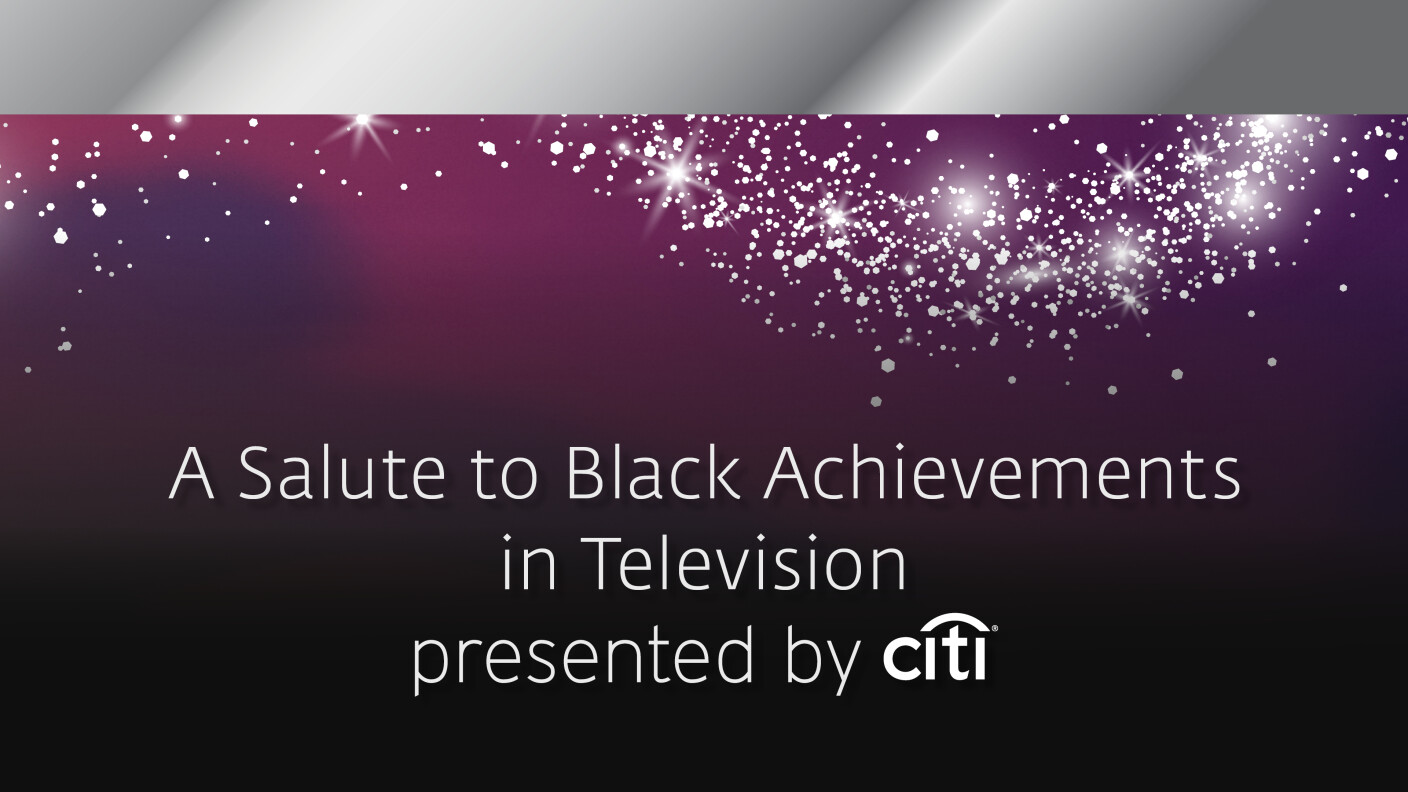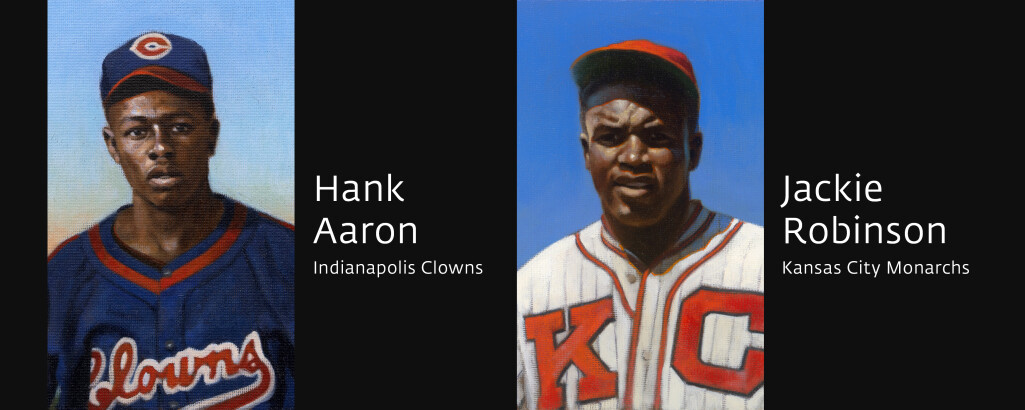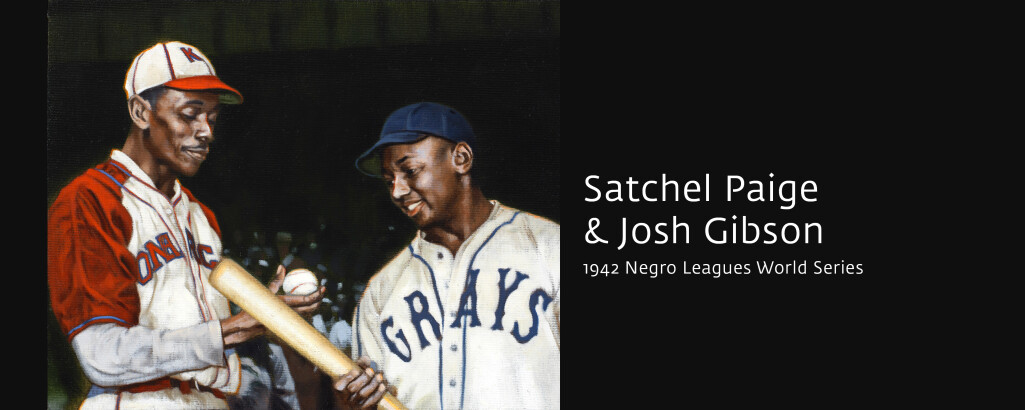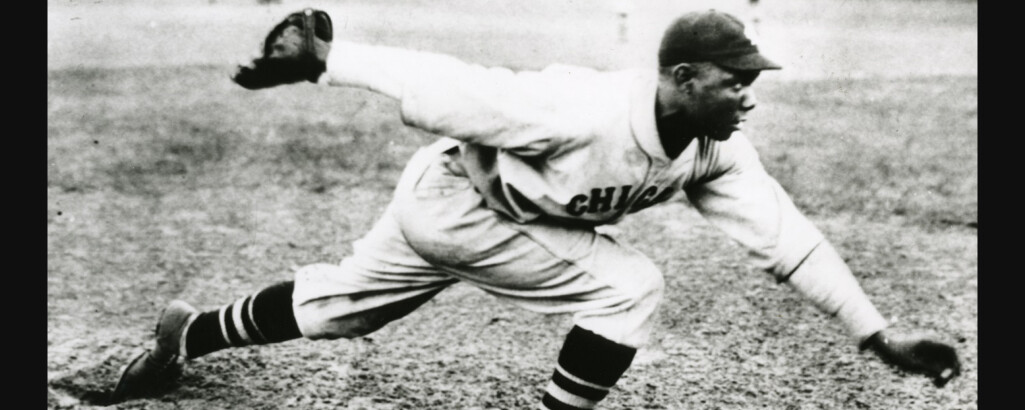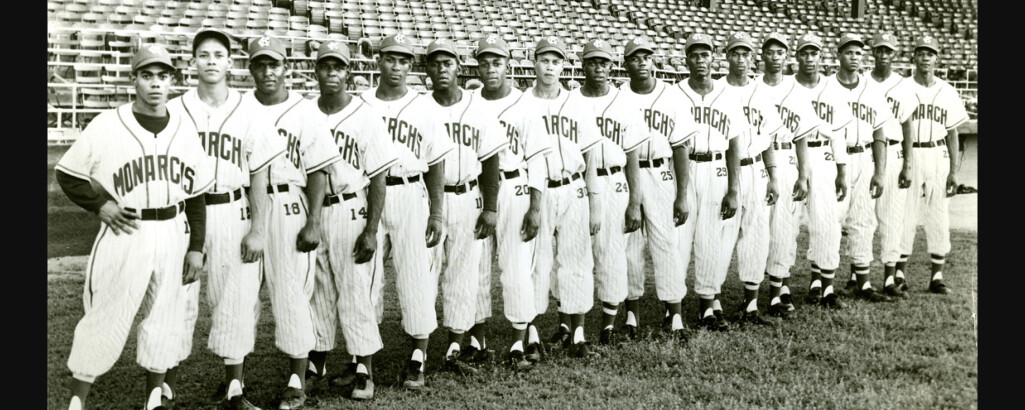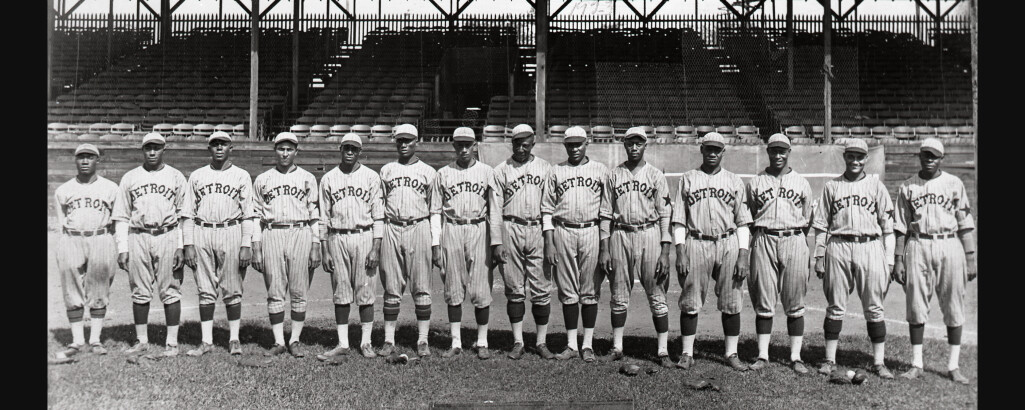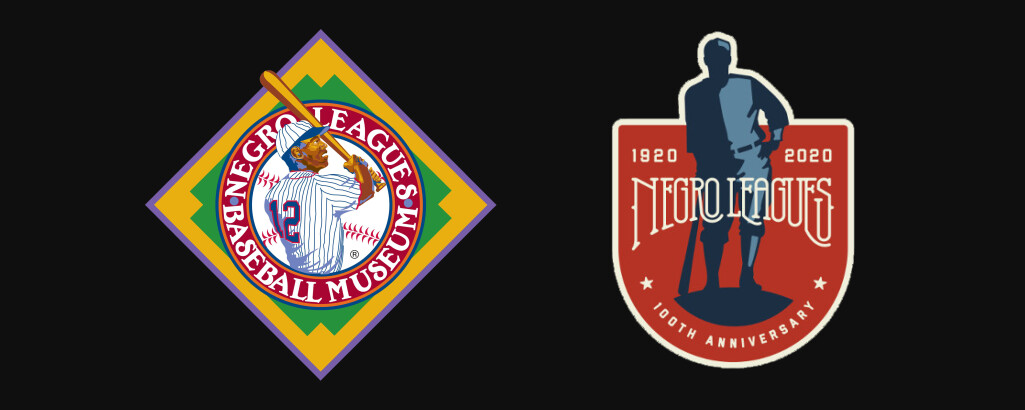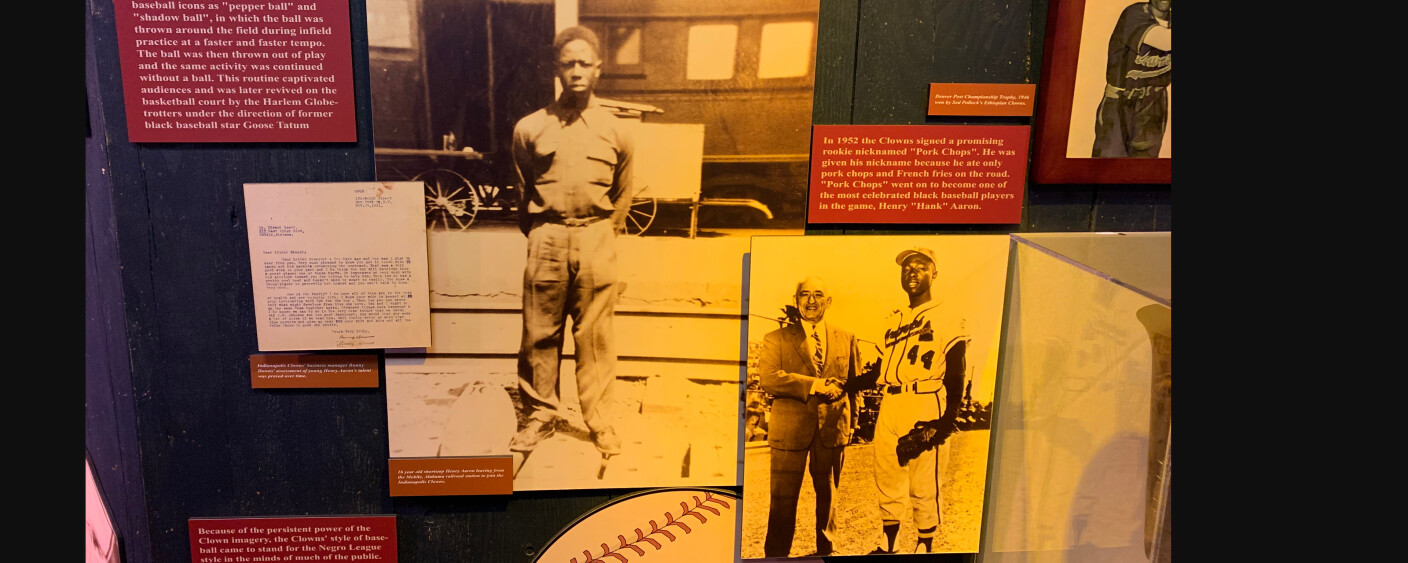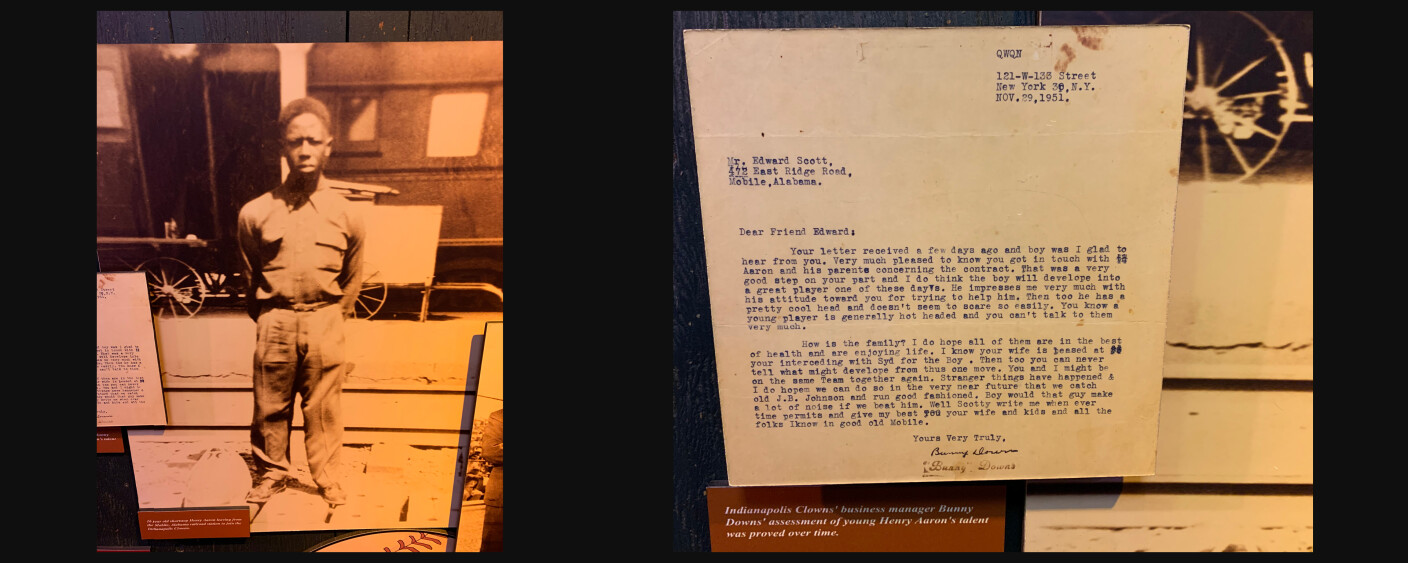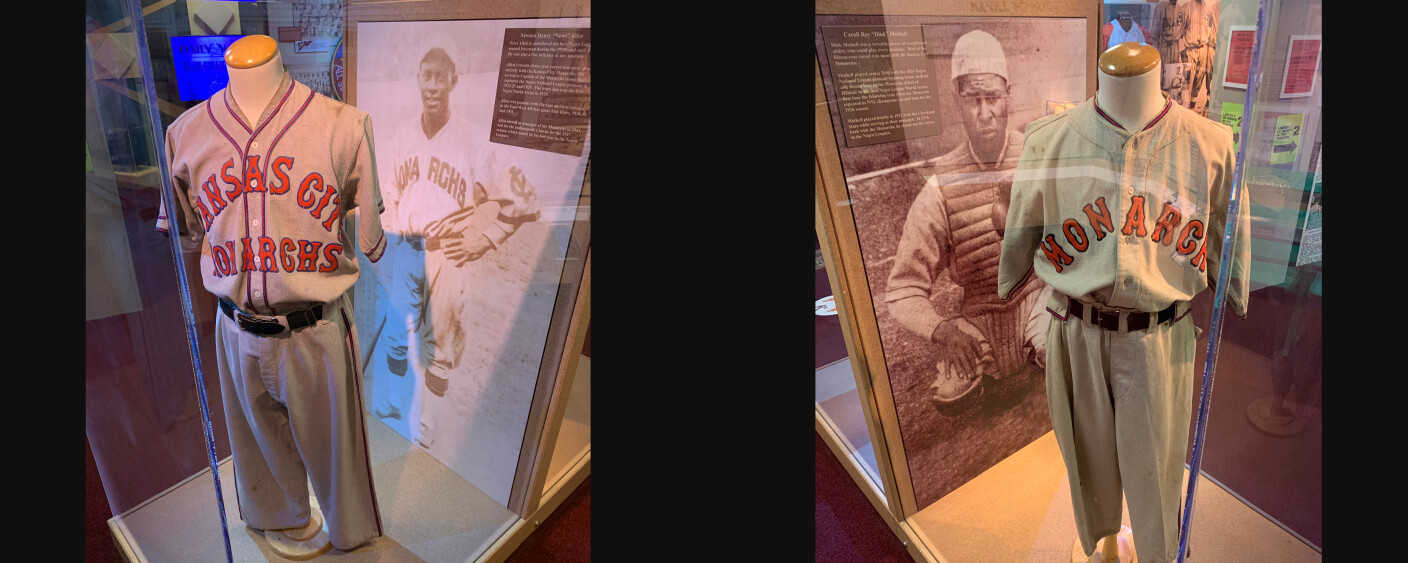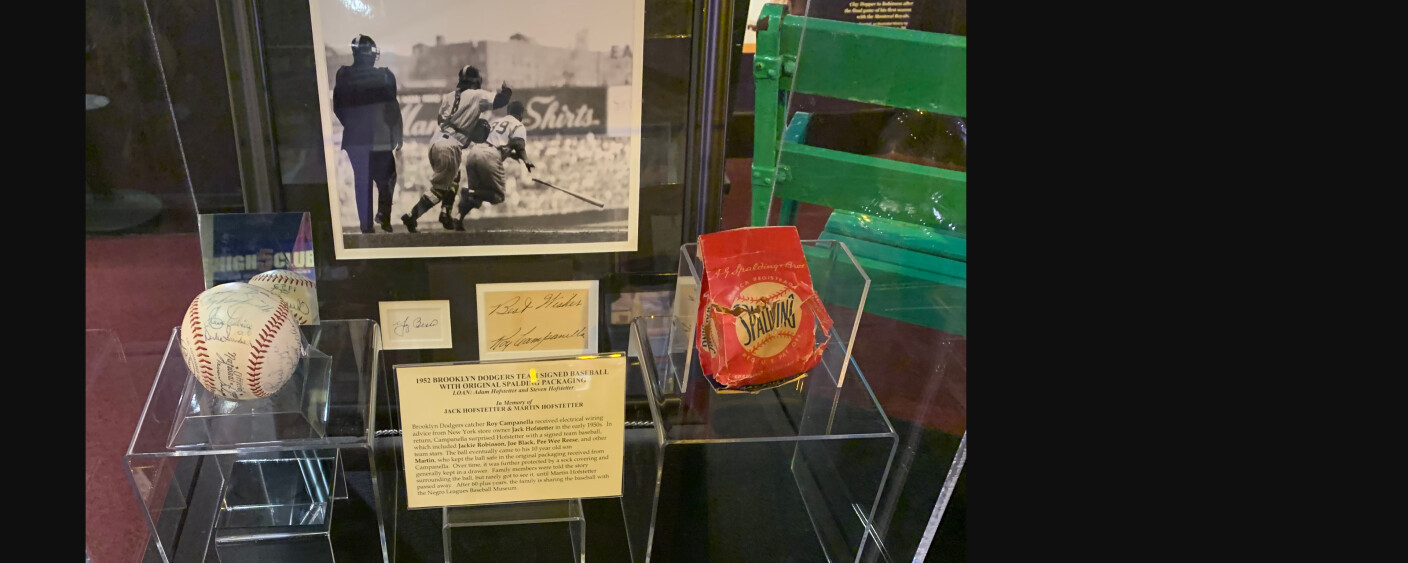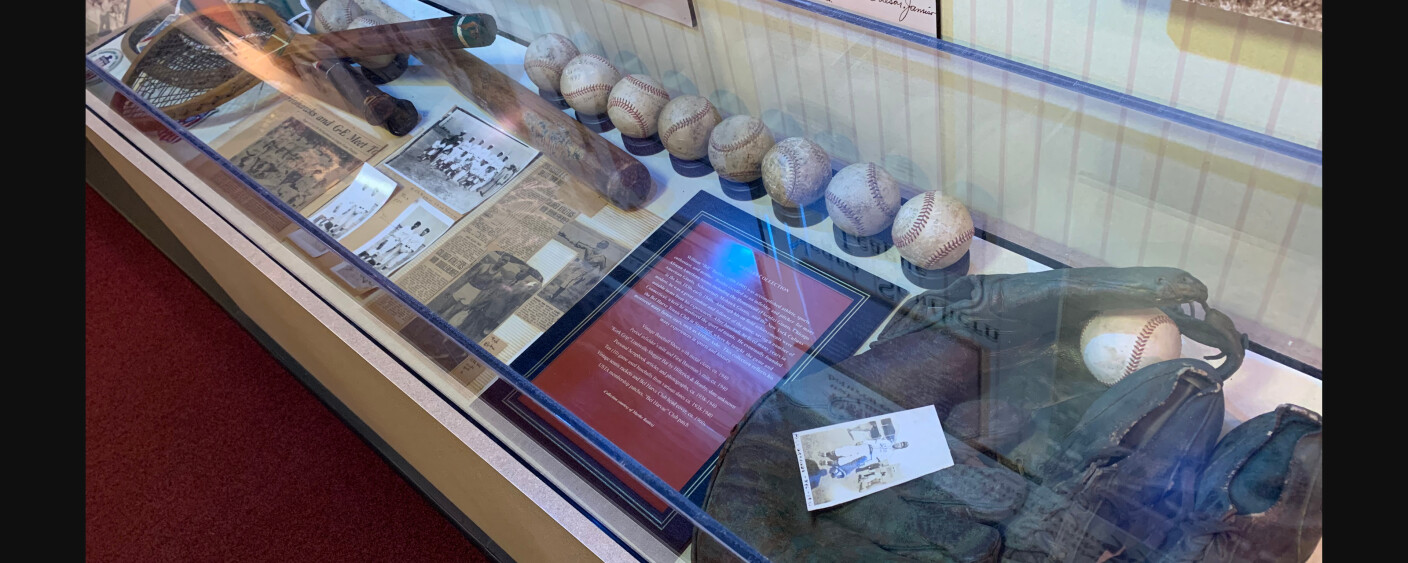Spotlight—The Negro Leagues
In December 2020, Major League Baseball announced that the records of Negro Leagues players would become included in the game’s official statistical record. This turning point in the history of the Negro Leagues shed an important light on the achievements of generations of iconic players. As we continue to discover and appreciate their enduring accomplishments, the Paley Center salutes the ongoing efforts to preserve and celebrate the rich legacy of the Negro Leagues.
Beginning in the late 1880s, Black players were barred from professional baseball because of unwritten rules and so-called “Gentlemen's agreements.” Instead, teams of Black players barnstormed around the country playing exhibitions, and ultimately formed the Negro National League on February 13, 1920. Over the next five decades some of the sport’s most legendary talent played for the League, including such icons as Cool Papa Bell, Josh Gibson, Satchel Paige, Oscar Charleston, Judy Johnson, Buck Leonard, and so many more. Negro League baseball attracted Black and white fans across the nation during the thirties and forties, slowly coming to end after Jackie Robinson and Larry Doby left the Negro Leagues to integrate Major League Baseball.
Starting in 1947 with the Brooklyn Dodgers’ signing of Jackie Robinson, and later the Cleveland Indians’ signing of Larry Doby, Major League Baseball begins the process of integrating. This great turning point in the history of the sport created opportunity for future generations of Black stars to star on the game’s biggest stage, but also led the Negro Leagues to eventually disband over the coming years.
Major League Baseball celebrated the Centennial of the Negro Leagues in 2020, declaring that February 13 would become an annual day of commemoration. The hundredth anniversary generated the interactive “Tipping Your Hat” project where fans across the world posted online photos and videos of themselves showing their appreciation for the enduring greatness of the Negro Leagues. For the occasion Barack Obama tweeted: “Today, I'm tipping my hat to everybody in the Negro Leagues who left a century-long legacy of talent, spirit and dignity on our country.”
Most of the proud history of the Negro Leagues was not captured on television, but much of their vibrant and important legacy is forever enshrined at the Negro Leagues Baseball Museum, which has collaborated with the Paley Center on this tribute.
The photos you see on the page are from The Negro Leagues Museum in Kansas City, MO.
The images of Hank Aaron, Jackie Robinson, and Satchel Paige & Josh Gibson in the slideshow are oil paintings by Graig Kreindler, from the collection of Jay Caldwell. Used with the permission of Jay Caldwell and negroleagueshistory.com; Dreams Fullfilled, LLC trademarks and copyrights are used with permission of Dreams Fulfilled, LLC.
![]()
Icons & Milestones
- Andrew “Rube” Foster is a dominant Negro Leagues pitcher who brought together owners of various clubs to form the National Negro League on February 13, 1920. Rube’s team, the Chicago American Giants, wins the first three pennants of the new league.
![]()
A Great Player One of These Days
At the museum, we have enlarged what was a small polaroid photograph of a young man, standing on some train tracks, squinting from the sun while posing for the image. He is dressed in working man’s clothes with a duffle bag, looking nervous, but confident. The museum has a copy of a letter next to the photo, which once accompanied the photograph. In the letter, we learn that this is a young baseball player, being recruited in the early 1950s by the Indianapolis Clowns. The letter is from team manager Bunny Downs to business manager Ed Scott. Downs is impressed with the young man and notes “I do think the boy he will develop into a great player one of these days.” He is leaving his home in Alabama for the first time to go play professional baseball in the Negro Leagues. His cross handed hitting style produced tremendous power and quickly caught the attention of Major League scouts. That young player was Henry Aaron, the eventual all-time home run leader in Major League Baseball.
![]()
- Considered one of the hardest throwers in baseball history, Satchel Paige plays for many Negro League teams and three teams in the Major Leagues, ending his career in 1965 by pitching three scoreless innings with the Kansas City Athletics at the incredible age of 59. Paige is the first Negro Leagues star elected to the Baseball Hall of Fame, and his extraordinary life was made into the 1981 television movie Don’t Look Back, starring Louis Gossett Jr.
- Hall of Fame outfielder James Bell begins his career as a pitcher for the St. Louis Stars and earned his nickname “Cool” when he struck out the legendary Oscar Charleston. For a better sound, James adds “Papa” to the name, creating one of the great monikers in sports history, “Cool Papa” Bell. In 2020, the MLB Network produces the profile “The Legend of Cool Papa Bell,” with Harold Reynolds and Bob Kendrick.
- Smokey Joe Williams is one of the Negro Leagues’ most dominant pitchers. He is also part of barnstorming teams that played against Major League Teams in exhibition games. His lifetime record in these exhibitions is an impressive 20-7, including victories against such legends as Walter Johnson and Grover Cleveland Alexander. In 2016, the MLB Network celebrates the career of Smokey Joe on MLB Tonight.
![]()
Monarchs Uniform
(LEFT) Among the early items the museum was able to purchase at auction was the jersey and pants attributed to “Newt” Allen (1901–88). A native of Texas, Allen was a leading second baseman in the Negro Leagues, primarily with the Kansas City Monarchs teams from 1922–44. The museum successfully competed for the uniform at auction, one of the most treasured items for our collection. This uniform is believed to have been worn in the late 1930s. Once we announced this exciting news, another uniform was introduced to us...
(RIGHT) Wilbur Douglass of Topeka, Kansas saw the news coverage of the Allen Uniform acquisition and remembered that he had a Monarchs uniform in his closet! The uniform was once worn by Caroll “Dink” Mothell (1897-1980), catcher for the Kansas City Monarchs in the 1920s and ‘30s. Mr. Douglass’s father was a young, aspiring baseball player who was invited to try out for the Monarchs by Mothell. Both men were natives of Topeka. Mothell loaned the young man his uniform. It did not help him make the team, but he was allowed to keep the uniform. It ultimately passed down to his son Wilber, and it remained in the Douglas family for well over sixty years. The Mothell uniform is as old, and perhaps older, than the Allen uniform. Mr. Douglass, in an emotional presentation to the museum, loaned the item to the museum in 1997. The museum has since purchased the uniform from Mr. Douglass.
![]()
- Negro Leagues legend Josh Gibson passes away in January 1947, just a few months before Jackie Robinson officially integrates the Major Leagues. Gibson, who recorded a staggering 962 career home runs, is considered one of the best power hitters of all time. In 1996, HBO’s TV movie Soul of the Game dramatizes the experiences of Gibson, Satchel Paige, and Jackie Robinson during their time in the Negro Leagues.
![]()
Robinson/Cobb Baseball
This display includes a baseball signed on one side by African American players of the Brooklyn Dodgers in the early 1950s, including Jim Gilliam, Joe Black, Roy Campanella, and Jackie Robinson. On the reverse side is an autograph of Ty Cobb, National Baseball Hall of Fame inductee, but someone attributed to being against integration of baseball. So how does that happen? Well, the display also includes a photo of Mr. John Moore, a soldier at Fort Riley, KS, attending a wedding with fellow soldiers, including his friend, Lt. Jackie Robinson. Moore and Robinson remained friends for years. After the military, Robinson continued his historic story as a groundbreaking athlete, while Mr. Moore settled in Kansas City, KS as a tavern owner, raising his family. After baseball’s integration, many Black fans would travel to go watch Robinson and other Black players compete. Sometime around 1952-53, Mr. Moore with some friends, and one of his daughters, traveled by train from Kansas City to Chicago to watch the Dodgers vs. the Chicago Cubs. It is presumed that Moore got the baseball pre-game from Robinson and teammates. Later in the game, Mr. Cobb, long since retired and a legendary player, was announced in attendance. Mr. Moore went up to Cobb and got the alternating signature.
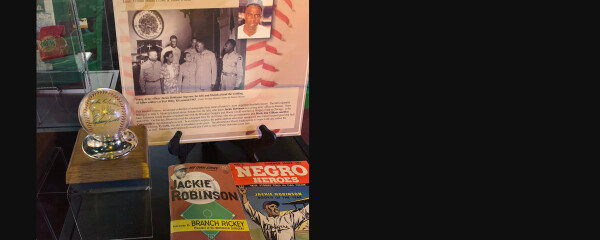
![]()
- Clutch hitter Buck Leonard plays seventeen of his eighteen career seasons with the Homestead Grays (1934–50), the longest service by any player with a single Negro League team. The Grays win three Negro League World Series in 1943, 1944, and 1948. Buck is featured in the 1981 documentary There Was Always Sun Shining Someplace: Life in the Negro Baseball Leagues.
- Highly respected Kansas City Monarchs player and manager Buck O’Neil is among the legends of the sport featured in Ken Burns’s award-winning 1994 PBS documentary Baseball.
- Judy Johnson, a star third baseman known for his hitting and fielding prowess, helps lead the Hilldale Daisies to three straight pennants (1923–25) and the first Negro Leagues World Series in 1924. He later serves as a coach with the Philadelphia Athletics and a scout for many MLB teams.
- Oscar Charleston is an outstanding center fielder and manager for many Negro League teams over his more than forty-year career. He later works with Branch Rickey, general manager of the Brooklyn Dodgers, to scout Black players for the MLB, recruiting catching great Roy Campanella in the process. His contributions help to build the Dodgers into a championship team, who played some of the earliest broadcasts of World Series games.
- Monte Irvin is an outstanding hitter for the Newark Eagles in the late thirties and forties, hitting an amazing .422 during the 1940 season. He later stars for the New York Giants, where he mentors future Hall of Famer Willie Mays. Monte is playing left field when Mays makes "The Catch,” his famous over the shoulder grab of a fly ball in the nationally televised 1954 World Series.
- MLB Hall of Famers and all-time greats Hank Aaron, Willie Mays, and Ernie Banks all start their professional careers in the Negro Leagues, with the Indianapolis Clowns, Birmingham Black Barons, and the Kansas City Monarchs, respectively.
![]()
The Hofstetter Baseball
This a 1952 Spalding baseball, with original packaging, signed by the 1952 Brooklyn Dodgers. The ball was presented by Dodger Roy Campanella to electrician Jack Hofstetter, a Brooklyn store owner. Campanella wanted to thank Hofstetter for assisting him with an electrical project at his home. The ball passed down to Jack’s son Martin who, with a few exceptions, kept the ball and the packaging secured in a dresser drawer in his home for many years. At one point, it was protected by a sock in the drawer! Martin’s sons and other family members would hear stories about the baseball, but Martin would never showcase it. When Martin passed away, the baseball was finally revealed. After 60+ years in the family, the Hofstetters have loaned the baseball to the museum.
![]()
- Sherman “Jocko” Maxwell is a legendary radio sportscaster, hosting several sports programs where he interviews Negro Leagues players. He is also the public address announcer at Ruppert Stadium for the Newark Eagles. Many historians consider Maxwell the first Black sportscaster in history.
- Norman Thomas “Turkey” Stearnes, dubbed so for his awkward running style, leads the Negro Leagues in home runs seven times. In 2019, the daughter of Turkey Stearnes is interviewed for the PBS special Detroit Stars of the Negro Leagues.
![]()
William Battles, Sportsman
William “Bill” Battles (1908–95) was an avid baseball and sports enthusiast. Born in Florida, Battles played for a number of semi-professional Black baseball teams, as well as Chicago American Giants and New York Cubans of the Negro Leagues in the late 1930s through the ‘40s. He preserved a number of items from playing and watching Black baseball. His collection included a number of unique game-used baseballs, his own bats, gloves, and shoes, as well as scrapbook articles and photographs. After his passing, the museum acquired the collection from his wife. The collection, curiously, also included tennis equipment. After baseball, Battles lived in Connecticut and learned the game of tennis, becoming a tennis professional and creating his own tennis club, Belle Harvre. His club welcomed many young Black stars, including an emerging young pupil named Arthur Ashe.
![]()
- Oscar Charleston is an outstanding center fielder and manager for many Negro League teams over his more than forty-year career. He later works with Branch Rickey, general manager of the Brooklyn Dodgers, to scout Black players for the MLB, recruiting catching great Roy Campanella in the process. His contributions help to build the Dodgers into a championship team, who played some of the earliest broadcasts of World Series games.
- Monte Irvin is an outstanding hitter for the Newark Eagles in the late thirties and forties, hitting an amazing .422 during the 1940 season. He later stars for the New York Giants, where he mentors future Hall of Famer Willie Mays. Monte is playing left field when Mays makes "The Catch,” his famous over the shoulder grab of a fly ball in the nationally televised 1954 World Series.
- MLB Hall of Famers and all-time greats Hank Aaron, Willie Mays, and Ernie Banks all start their professional careers in the Negro Leagues, with the Indianapolis Clowns, Birmingham Black Barons, and the Kansas City Monarchs, respectively.
![]()
© THE PALEY CENTER FOR MEDIA

